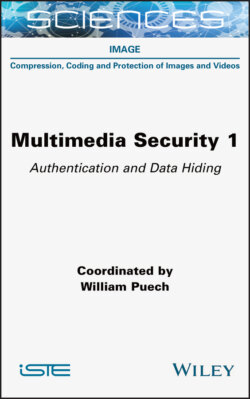Читать книгу Multimedia Security, Volume 1 - William Puech - Страница 24
1.3. Traces left on noise by image manipulation 1.3.1. Non-parametric estimation of noise in images
ОглавлениеNoise estimation is a necessary preliminary step to most image processing and computer vision algorithms. However, compared to the literature on denoising, research on noise estimation is scarce (Lebrun et al. 2013). Most homoscedastic white noise estimation methods (Lee 1981; Bracho and Sanderson 1985; Donoho and Johnstone 1995, 1994; Immerkær 1996; Mastin 1985; Voorhees and Poggio 1987; Lee and Hoppel 1989; Olsen 1993; Rank et al. 1999; Ponomarenko et al. 2007) follow the same paradigm: they look for flat regions in the image and estimate noise in high frequencies, where noise dominates over signal.
Figure 1.5. An example of the impact of quantization on a DCT block. Each DCT coefficient is quantized by a value found in a quantization matrix. Rounding to the nearest integer results in many of the high-frequency coefficients being set to zero. Each block is zig-zagged to be encoded as a vector with a sequence of zeros
We shall limit ourselves to discuss the method acknowledged as the best estimator for homoscedastic noise in the review (Lebrun et al. 2013), the Ponomarenko et al.’s method (Ponomarenko et al. 2007). This method computes the variance of overlapping 8 × 8 pixels blocks. To avoid the effects of textures and edges, blocks are sorted according to their low-frequency energy; only a small percentile (typically 0.5%) is used to select the blocks whose low- and medium-frequency energy is lowest. The final noise estimation is obtained by computing the median of the variances in the high frequencies of these blocks.
Homoscedastic white noise estimation algorithms can be adapted to estimate an arbitrary signal-dependent noise curve, as pointed out by Colom et al. (2014). However, after undergoing the complete camera processing chain detailed in section 1.3.2, noise depends not only on signal but also on frequency. A multi-scale estimation is needed in order to estimate highly correlated frequency-dependent noise (Lebrun et al. 2015). Following this observation, Colom and Buades extended Ponomarenko et al.’s method (Ponomarenko et al. 2007) to incorporate such a multi-scale approach (Colom and Buades 2013).
